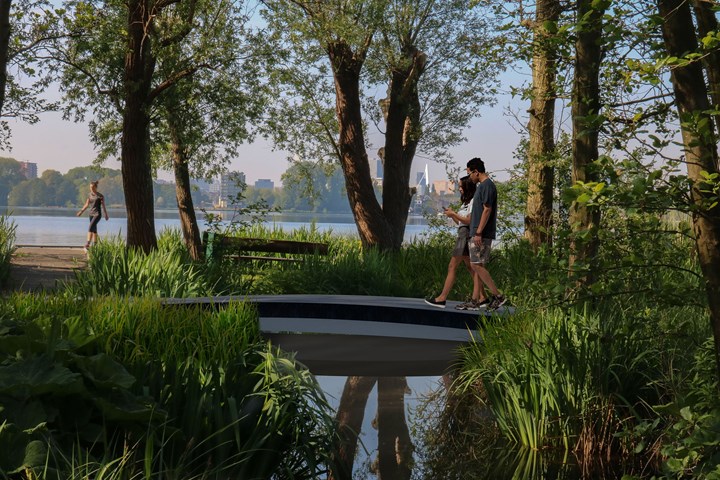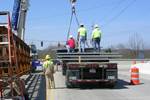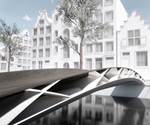3D printed FRP footbridge paves way for circular composites
The thermoplastic composite footbridge incorporates a short glass fiber-filled PET specifically designed for 3D printing.

Rendering of 3D printed footbridge. Source | Royal HaskoningDHV and DSM
Royal HaskoningDHV (Amersfoort, Netherlands), DSM (Geleen, Netherlands), a global science-based company in nutrition, health and sustainable living, and the city of Rotterdam announced on July 3 the intention to collaborate in the design and build of a composite footbridge with potential for use of circular composites. Composed of 3D printed fiber-reinforced polymer (FRP), the lightweight footbridge will be installed at Kralingse Bos park in Rotterdam, and is said to underpin the city’s goal to offer versatility, circularity and sustainability.
The bridge incorporates a fiber-reinforced plastic from DSM, Arnite, which is a short glass fiber-filled PET that is specifically designed for 3D printing. The current footbridge in Rotterdam uses virgin material, which can be recycled into feedstock for use in a new bridge. All parties note that the next step will be to add recycled content to end-of-life bridges, and that there will be investigation into whether future bridges can be made from recycled polymers, or mixed grades.
“The footbridge as a circular composite, aligned with our city’s aim for sustainability, targets a reduction in our carbon footprint. We are proud to be the first city to test, print and install it,” says Mozafar Said, asset manager from Rotterdam. “We see the use of composite bridges as a smart solution to replacing our older constructions. With more than 1,000 bridges in Rotterdam, we are constantly looking to push the boundaries to develop the next generation of bridges which will be more sustainable and circular with lower maintenance and lifecycle costs.”
According to the companies, the footbridge will be developed in line with the highest standards of safety for FRP bridge design, and the city of Rotterdam’s infrastructure experts in composite bridges will be closely involved in the design and build process.
Additionally, it is noted that sensors might also be included into the footbridge to build a digital twin of the bridge which will optimize maintenance, ensure safety and extend the life span of the bridge. It is estimated that the footbridge will be installed and in use by the end of 2020.
Related Content
-
Swedish parking garage to incorporate decommissioned wind blades
Architect Jonas Lloyd is working with Vattenfall to design the multistory building with a wind blade façade, targeting eco-friendly buildings and creative ways to remove blades from landfills.
-
Gatorbar, NEG, ExxonMobil join forces for composite rebar
ExxonMobil’s Materia Proxima polyolefin thermoset resin systems and glass fiber from NEG-US is used to produce GatorBar, an industry-leading, glass fiber-reinforced composite rebar (GFRP).
-
Composites reinvent infrastructure
Celebrating National Composites Week, CW shares ways in which composites continue to evolve the way we approach infrastructure projects.















